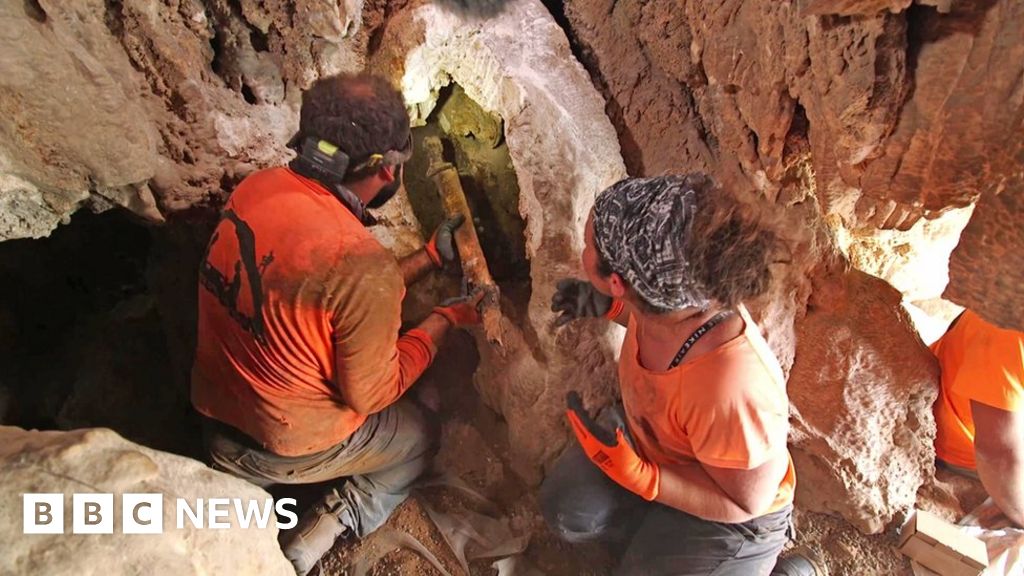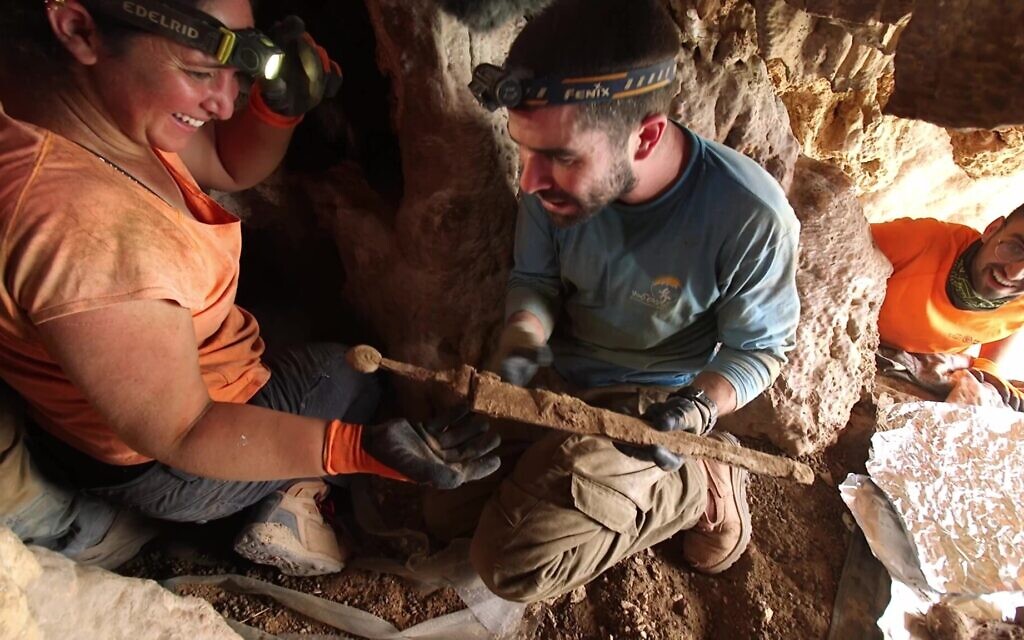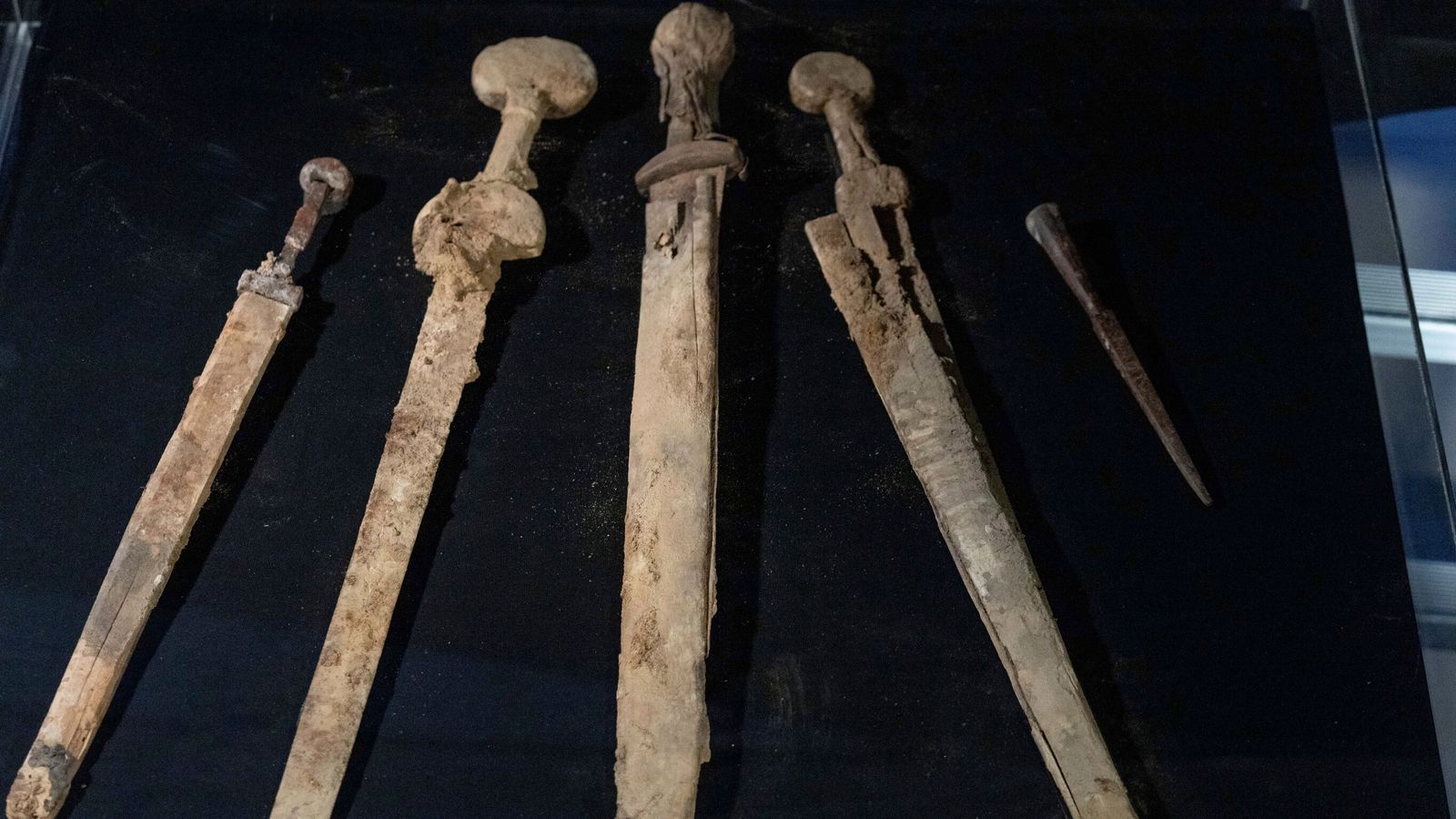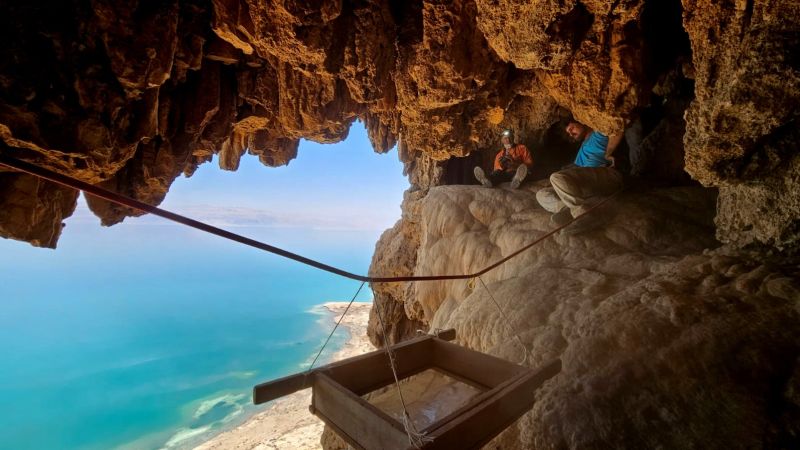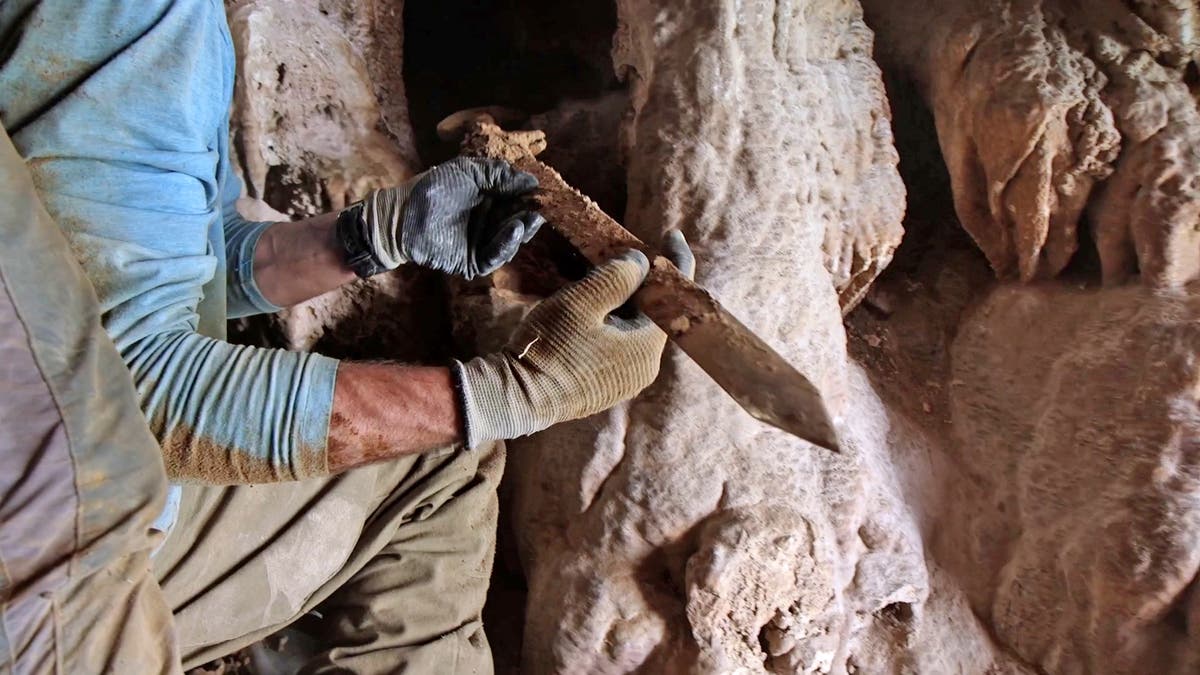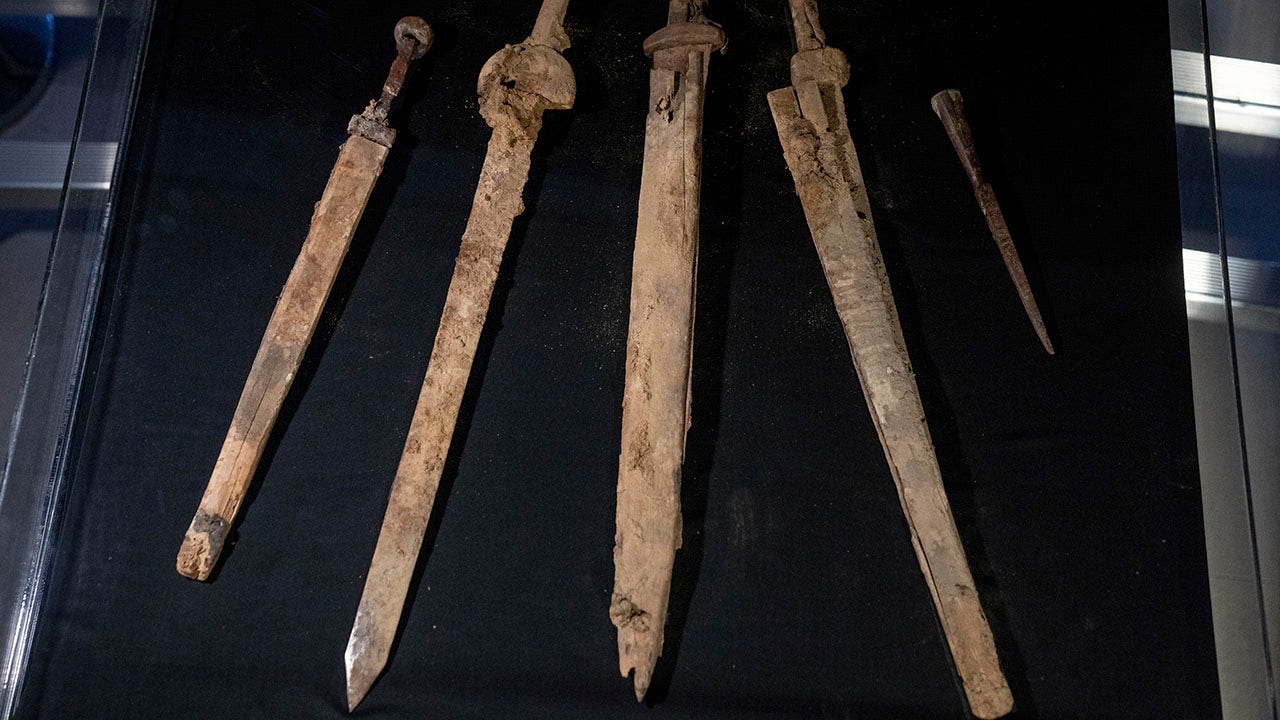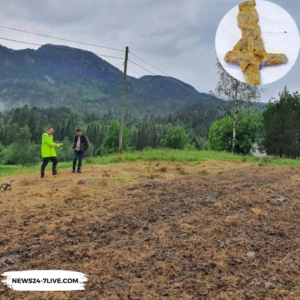A cache of four preserved Roman swords, accepted to be around 1,900 years of age, has been uncovered by Israeli researchers in a secluded cave perched on the cliffs overlooking the enigmatic Dead Sea.
These old weapons, with iron blades estimating between 60 to 65 centimeters (24 to 26 inches) long, were discovered in a near-inaccessible crevice while a team was conducting research on an ancient inscription found on a stalactite.

Also Read: British Museum: More than 1,000 Artefacts were Stolen
The uncovering of these Roman swords is a remarkable archeological find that reveals insight into a pivotal period in history. Eli Escusido, the director of the Israel Antiquities Authority (IAA), aptly described it as a “dramatic and exciting discovery, touching on a specific moment in time.”
This discovery offers a unique time capsule, preserving not only these swords but also other artifacts, including fragments of scrolls, coins from the Jewish Revolt, leather sandals, and more.
These relics provide a tangible connection to the past, transporting us back to the era when the Roman Empire held sway in the region.
The Dead Sea, a unique body of water bordered by Jordan to the east and Israel and the West Bank to the west, has long been associated with significant historical events. In antiquity, it was part of the Roman province of Judea, and this region witnessed numerous conflicts and uprisings against Roman rule.
One of the most compelling theories regarding the origin of these swords is that they were hidden away by Judean rebels. These dissidents, in their intense battle against the powerful Roman empire, sought any advantage they could find.
Also Read: Tel Erani: Archaeologists Discovered 5500-Year-Old Gate in Israel
It is believed that the swords were taken from Roman soldiers, either as spoils of war or from the battlefield itself. Hiding these weapons in a remote cave was a strategic move, ensuring that the rebels would not be caught carrying Roman arms and thus avoiding the wrath of Roman authorities.
One specific historical event stands apart as a potential background for the concealment of these swords, the Bar Kochba Revolt.
This major Jewish uprising contrary to Roman rule, which happened somewhere in the range of 132 and 135 AD, was led by Simon Bar Kochba, a charismatic leader who aimed to restore Jewish sovereignty in the region.
During this tumultuous period, these swords may have played a pivotal role, serving as symbols of resistance and tools of rebellion against the Roman oppressors.
The swords are wonderful antiquities. Three of them, actually housed inside their wooden scabbards, are distinguished as Roman spatha, or long swords, known for their adequacy in close battle.
The fourth sword, with a ring-pommel handle and a shorter blade, stands out as a unique find. The careful craftsmanship of these weapons is evident in their well-fashioned wooden or metal handles.
Also Read: Tutcetus Rayanensis: 41 Million Year Old Whale Discovered
One question that arises is how these swords managed to survive the ravages of time for nearly two millennia. The answer lies in the dry desert climate that envelops the Dead Sea region.
This unique environment is a natural preserver of ancient artifacts, providing conditions that prevent the decay and degradation that would occur in other regions of Israel.
The swords, with their striking sharpness, appear like they were stowed away just yesterday, a testament to the incredible preservation capabilities of this arid landscape.
The discovery of these swords was not a simple stroke of luck but the result of meticulous archaeological work. It all began fifty years ago when an incomplete ink inscription in ancient Hebrew script was found in the same cave high above the Dead Sea.
Archaeologist Dr. Asaf Gayer, geologist Boaz Langford, and photographer Shai Halevi embarked on a mission to decipher the inscriptions with the aid of multispectral photography. However, their mission took an unexpected turn when Dr. Gayer stumbled upon a well-preserved Roman pilum, or javelin, hidden in a narrow crevice.
Also Read: National Gallery of Australia Return Stolen Cambodian Artefacts

